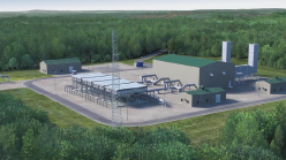Solomon Associates (Solomon) is pleased to submit the Fire Prevention and Control Survey for the results obtained from a survey designed to gather information on the fire prevention and control practices of Interstate Natural Gas Association of America (INGAA) membership.
Some insurance industry loss control inspectors are recommending or requiring installation of active fire suppression systems in natural gas compressor buildings without due consideration of fire prevention efforts or cost versus benefits. The objective of this INGAA membership survey was to determine the extent to which insurance and risk management companies are requesting natural gas transmission companies to install active fire prevention controls, what types of active and passive controls are being used, and the incidence of fires. Active fire controls include a method of extinguishing the fire after ignition, whereas passive controls are methods to minimize fire risk or alert operators of a fire or fire condition. Examples of active and passive controls can be found on the survey form (Appendix A).
Responses were recieved from 16 of teh 19 parent companies contacted, representing 46 operating companies with 4,163 compressor units. INGAA believes that this may be the most comprehensive survey of its type in North America. Key points extracted from the survey are:
- Six fires with damage of greater then $500,000 were reported for the last 10-year survey period (fire incident frequency is 1.44*10-4 per unit per year).
- Approximately 92.5% of the units surveyed were protected by multiple passive fire protection controls, while approximately 7.5% of the units had active fire protection.
- Five of the six incidents with damage greater than $500,000 fires occured at units with passive fire; one incident occured at a location with active fire protection.
- Fire incident frequency rate for reported fires is no higher for units with only passive fire protection controls.
- All reported fires occured at turbine units, which were 24.3% of the surveyed units.





